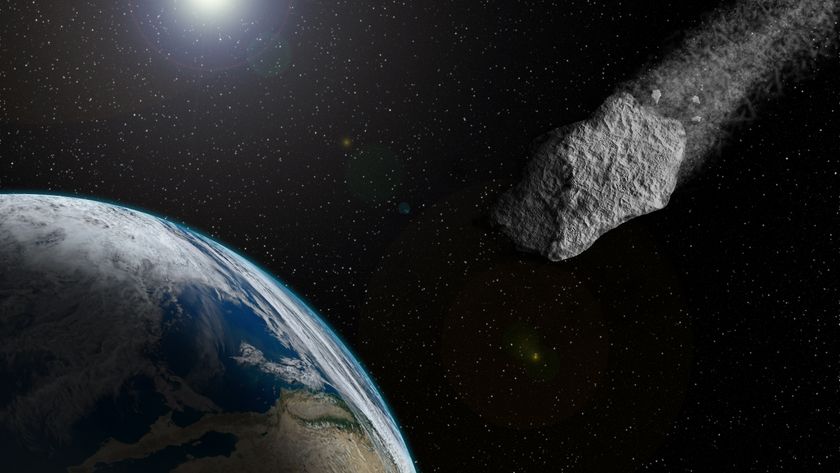Nile Floods Gave Rise to Ancient Mega Lakes
New evidence suggests that the Nile's famous floods were much more extensive than previously thought — in fact, they spread nearly 100 miles west of the river and created "mega-lakes" in the ancient desert.
A team of American and Egyptian researchers have used Space Shuttle Radar Topographic Mission (SRTM) data to determine the floods the Nile is famous for started at a much earlier time — 250,000 years ago — and were much more extensive than originally thought.
Newly processed topographic data from the 1980s and 1990s show drainage channels that extend more than 100 miles (160 kilometers) west of the Nile that end abruptly in the desert, where an ancient lake would have had its shoreline.
"We had been looking at drainage patterns near Bir Kiseiba since the mid 1990s; the direction of drainage had always been confusing," team member Ted Maxwell of the National Air and Space Museum told OurAmazingPlanet. "If it rained there today, the water would drain towards the scarp from the east in the desert, yet the directions indicated in the subsurface sediments suggested drainage in the other direction."
To figure out what exactly was going on, Maxwell and his colleagues compiled an SRTM map, "which, after staring at it in my office for several months, finally suggested to me that the entire area was flooded," Maxwell said. The flood waters would have pooled into certain areas, creating the mega-lakes.
The discovery of these mega-lakes provides answers to a few unresolved questions, like the fossilized fish found 250 miles (400 km) west of the Nile in the desert.
"I think it explains some previous questions that several of us have had about drainage directions, about how the Nile perch got to Bir Tarfawi, and about when the Nile became integrated with central Africa. Time and more work will tell if it remains a viable hypothesis," Maxwell said.
Sign up for the Live Science daily newsletter now
Get the world’s most fascinating discoveries delivered straight to your inbox.
The team used various methods to better understand what they were seeing on the topographic maps. They dug trenches 6 to 10 feet (2 to 3 meters) deep to look at the subsurface rock layering and tied that in with Shuttle Imaging Radar data. Then they used ground penetrating radar, which penetrates up to 39 feet (12 m) in the dry sand, to look at the layering in the subsurface. Finally, they created a mosaic from all the data.
While this discovery has answered a few questions, there are still a few disagreements among researchers in the field. While Maxwell and his coauthors believe that the water of the mega-lakes was supplied by Nile overflow, some others feel that they would have been supported by rain and groundwater.
The rainfall that scientists think fell in the area then wouldn't have supported these lakes, Maxwell contends. "However, it is an alternative, and one that someone well-versed in modeling rainfall and evaporation could test," he added.
As for future efforts, Maxwell said that he and other researchers were interested in drilling into and dating sediments around certain key areas of the Nile to see if they can pin down the timing of flooding and link it to the mega-lakes.
The research team's findings will be published in the December issue of the journal Geology.
- The World's Longest Rivers
- Newly Discovered Walls Buffered Sphinx from Egypt's Sand
- History's Most Overlooked Mysteries
This article was provided by OurAmazingPlanet, a sister site of LiveScience.

NASA changes odds of asteroid hitting Earth in 2032 yet again — but this time it's good news

How to watch 'Museum Alive with David Attenborough', as US streaming begins for CGI-fueled documentary

AI-designed chips so weird that 'humans cannot really understand them' — but they perform better than anything we've created
Most Popular

